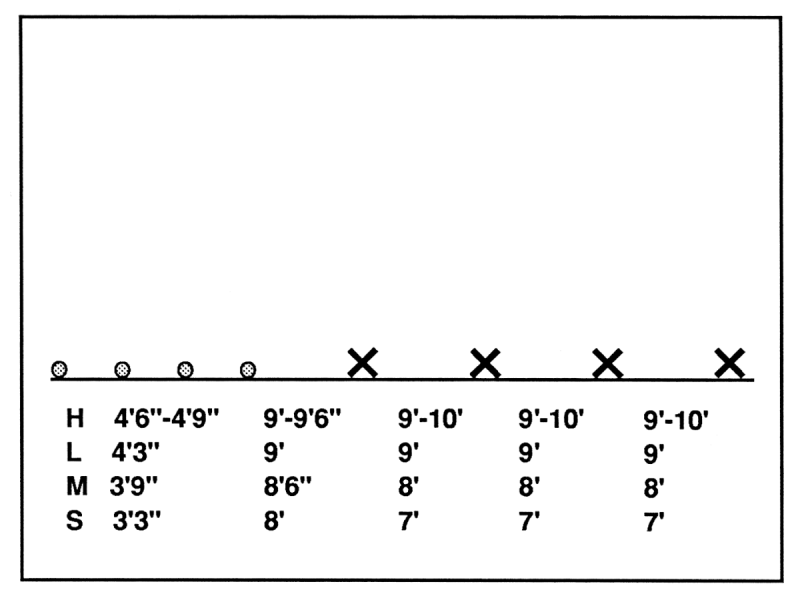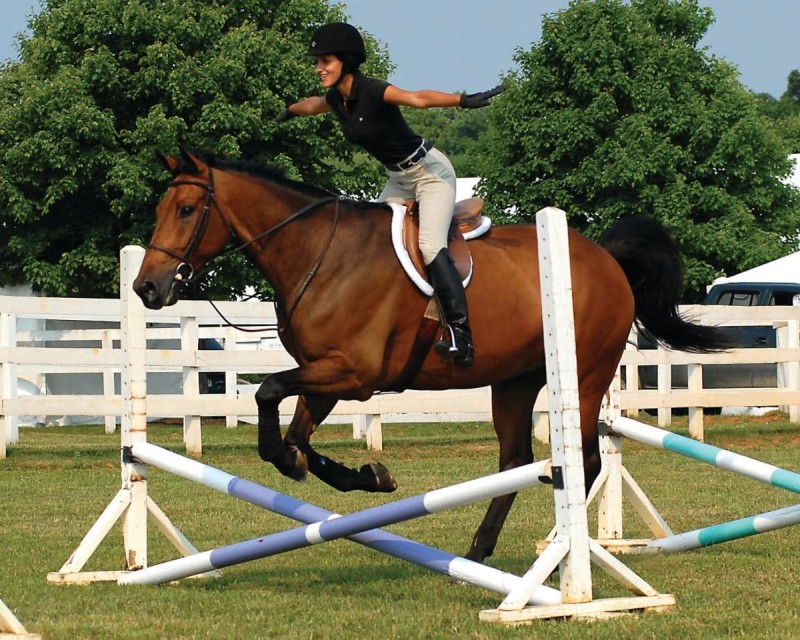According to Maclay Finals winner, judge, clinician and author Anna Jane White-Mullin, most “rushers”—horses that run to fences—are topped by nervous riders who panic when their horses become tense or excited. These riders worsen the problem by reacting too quickly and strongly with their aids, usually pulling hard on their horses’ mouths, while leaning too far forward to the fences to make sure they aren’t left behind on takeoff. It’s as though all they can think of is somehow getting from one side of the fence to the other.
If your horse rushes or gets tense to fences, and you find yourself overcompensating with your hands and upper body, try this gymnastic exercise from White-Mullin’s book The Complete Guide to Hunter Seat Training, Showing, and Judging in a safe, enclosed space with an experienced instructor on-hand.
♦♦♦
1. Set up four ground poles leading to four cross-rail bounces—see the illustration for distances appropriate for horses (H) and large (L), medium (M), and small (S) ponies. Cross-rails are better for bounces because the shape of the “X” holds the horse straight down the line so you can concentrate on matters other than steering.

2. Knot the end of the reins around a clump of mane, so that when you drop them as you cross the second ground pole, they will not sag so far downward that they get caught in the horse’s feet as he jumps.
3. As you cross the second ground pole, drop the reins and either extend your arms out to the sides or put both hands on your helmet. Unable to slow the horse with your hands, you will become acutely aware of the effect of your upper body on the horse’s pace.

Photo: Bill Johnson
You will notice as you approach the exercise that if you lean forward, the horse will become quicker. You will then react naturally by opening your hip angle, so that your upper body goes back to its correct original position. In most cases, this will immediately result in the horse slowing his pace. Through repetition of this exercise, you can learn to resist inclining too far forward on the approach to fences so you are no longer inadvertently using your upper body as a driving aid. As your horse rocks back and forth during the multiple jumping effort, you must adjust your center of gravity to match his.

Photo: Bill Johnson
Through practice, you will learn to keep your balance in the air, much as a person on roller skates learns how to adjust her balance so she won’t fall down.
♦♦♦
This excerpt is reprinted with permission from Trafalgar Square Books.




 February 10, 2016
February 10, 2016 




























